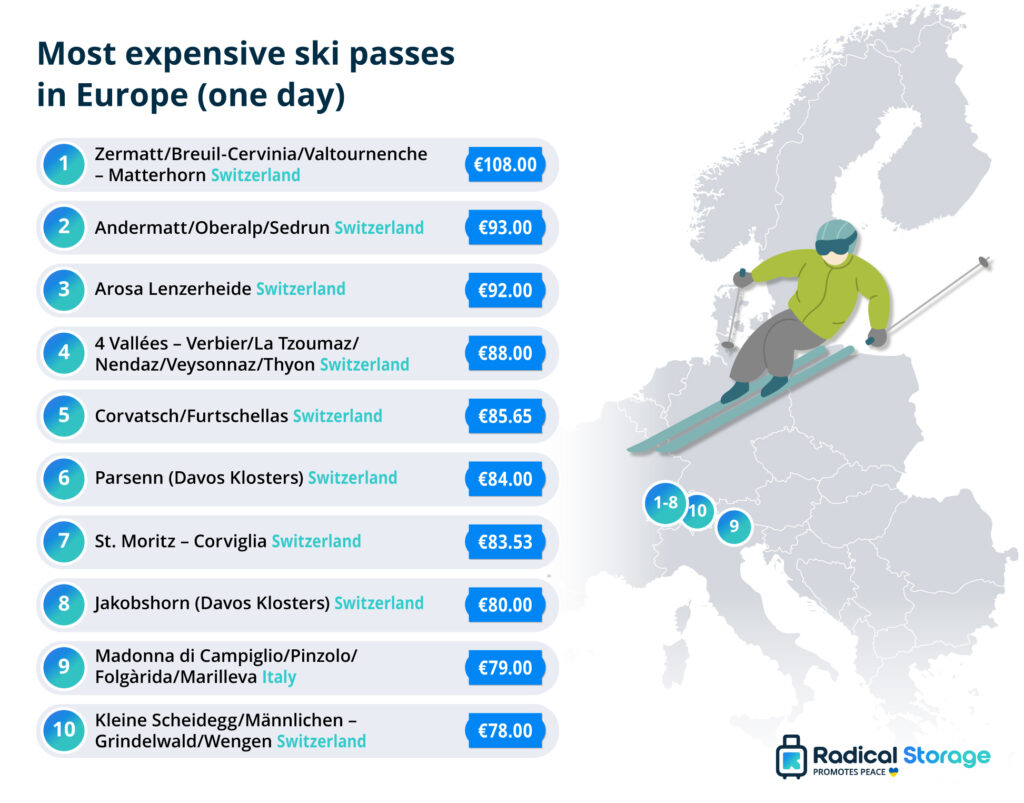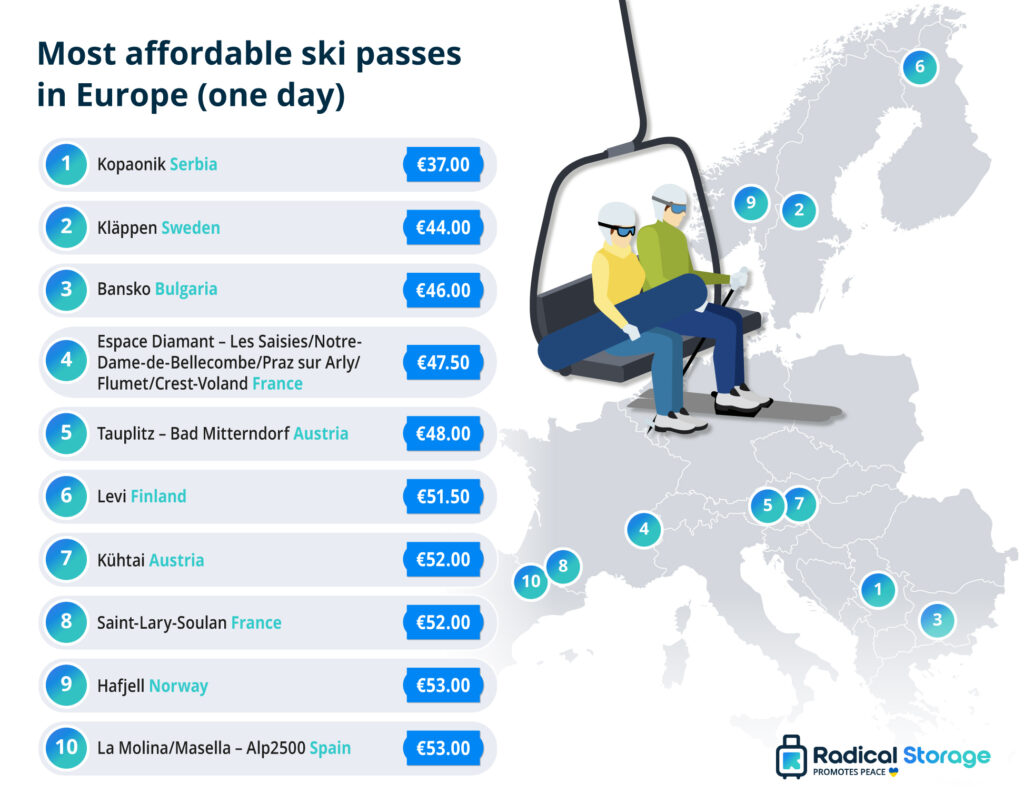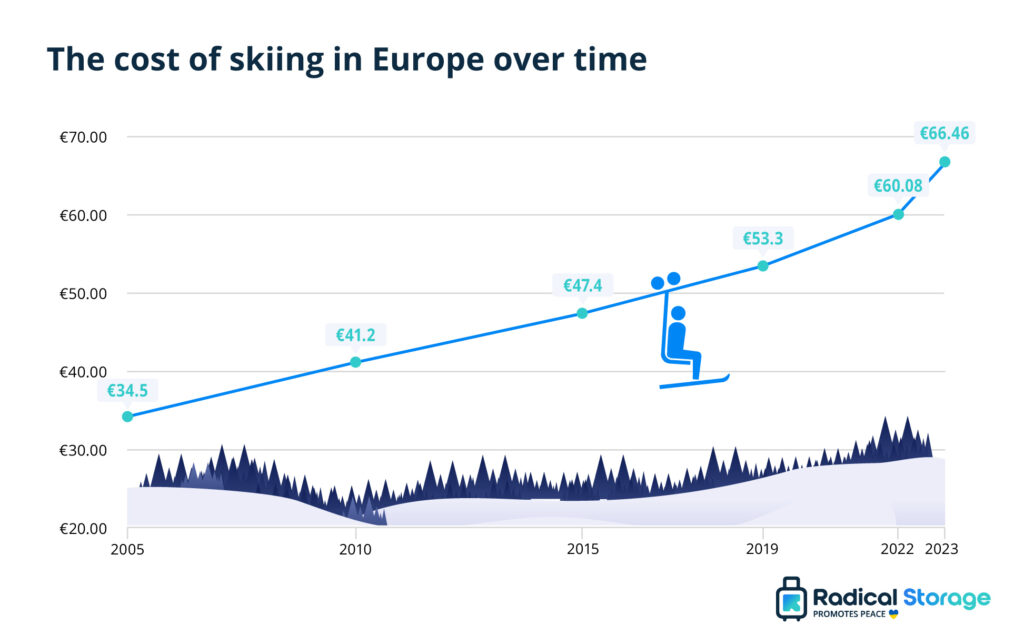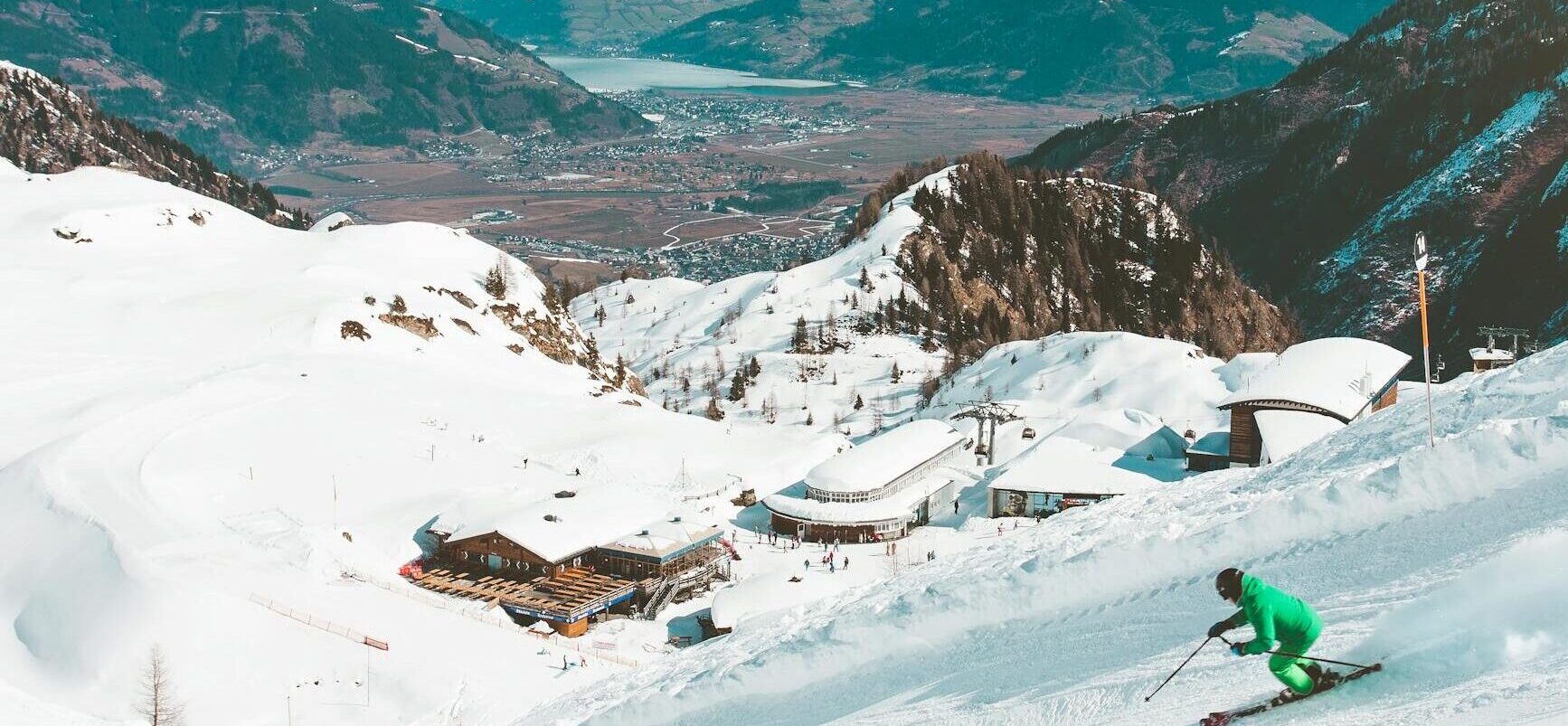From the warmth and indulgence of the chalet or lodge to the harsh cold of the slopes, skiing can be a daunting experience at first. Yet the thrill and accomplishment that comes with completing your first run and moving to more challenging slopes has people returning every winter.
Skiing and the winter sports industry more generally is huge business. According to Laurent Vanat, an expert with the sector’s most comprehensive data collection; around 400 million people visit ski resorts each year, with the Alps accounting for more than half of this.
While ski season in Europe typically brings in around €28 billion — around 7% of the EU’s annual tourism market; the Covid-19 pandemic left the industry on a knife edge with the 2020/21 winter hampered by travel restrictions.
With the pandemic’s travel impact now behind us and travellers now able to return to Europe’s great ski slopes, we wanted to find out how the cost of skiing has changed over time. Analysing ski pass data from 2005 to 2023 and calculating for inflation using the International Monetary Fund’s (IMF) Consumer Price Index, we’ve been able to answer the question.
Key findings:
- The average day pass for Europe’s ski resorts costs €66.46 in 2023 — 24.7% more expensive than before the Covid-19 pandemic in 2019.
- Overall, the cost of skiing has risen by 34.8% above inflation since 2015, with Swiss, Austrian, and Italian resorts most responsible.
- Switzerland’s Zermatt resort is Europe’s priciest resort for skiers, with a day pass costing an average of €108.
- Italian ski resorts have seen the largest percentage price hike since 2019, with the Paganella resort raising ski day passes by 51.1%.
- Serbia’s Kopaonik resort is the cheapest, costing just €37 per day to ski there.
- Since 2015, Bulgaria’s ski resorts have seen the highest price rise, by an average of 34.8%, the most out of any European country analysed.
Cost of skiing in Europe in 2023/2024
Choosing the perfect ski resort for your next winter break can be overwhelming. With almost 4,000 resorts across Europe alone, there are a variety of factors to consider, before even considering other popular destinations like Canada, Japan or the USA. Price is undoubtedly a factor, and with the average day pass costing €66.46, it’s important to find value for money.
Whether you’re looking for cross-country terrain, fast downhill slopes or gentle valleys for beginner/intermediate skiers, Europe’s resorts offer plenty of versatility and cater for all abilities and budgets.
Most expensive ski passes in Europe 2023/2024
When it comes to Europe’s priciest passes, it should come as no surprise that Swiss resorts dominate the list. Overall, ski passes in the country average around €78.92, with Zermatt ski resort being the costliest in our research.
Valais classic, Zermatt, has a wide range of skiing areas and a luxury village, but that luxury comes at a cost of €108 per day for a ski pass, much higher than any other alternative in this analysis. With Switzerland dominating the most expensive ski passes in Europe for the 2023/24 season, those flying into Zurich should be prepared to be paying premium prices for premium powder.

Most affordable ski passes in Europe 2023/2024
While Switzerland’s great resorts are a must-visit for any skiing enthusiast, there are plenty of incredible experiences to be enjoyed all over Europe at all price points. Serbia’s picturesque Kopaonik National Park is home to Europe’s cheapest slopes — costing just €37 per day, making a flight to Belgrade even more of a bargain. The region’s subalpine climate and sunny outlook make it perfect for skiers of all abilities on a budget.
If you’re looking for skiing in the Alps, France’s Espace Diamant is, according to our analysis, the most affordable resort in the region, a favourite for visitors of Annecy. Located just a few miles from Mont Blanc and within a 90-minute drive of Geneva, a peak season day pass is just €47.50 — less than half the cost of resorts across the Swiss border.

Cost of skiing in Europe over time
For many people in non-alpine countries, skiing is viewed as an expensive hobby. The cost of equipment, lodging and lessons on top of travel is certainly enough to deter the average holidaymaker not accustomed to the sport — and that’s without the association with luxury high-end European ski culture.
But how has the cost of skiing changed over time? Since 2005, we have calculated the average cost of a day pass at 100 of Europe’s top resorts. Overall, skiing across Europe has increased by 92.6% during this span, meaning that skiers find themselves paying almost double the price for the same slope 18 years ago.

Cost of skiing over time in each country
We also analysed the average cost increase for each of the slopes. While data was limited from the 2000s to make a complete comparison across all 100, we can see how prices have evolved in each of Europe’s major ski nations since 2015.
Bulgaria saw the most dramatic increase, rising by an average of 34.8% since 2015. The country’s slopes have exceeded expectations since the Covid-19 pandemic, with Sofia newspapers reporting that tourist numbers are up by a quarter as travellers flock to the Balkan mountains’ resorts. Meanwhile, similar increases were felt across Austria (34.3%) and Italy’s (33.1%) ski slopes.
Cost of skiing post-pandemic
As with all aspects of the travel industry, Covid-19 wreaked havoc on businesses reliant on tourism, putting resorts large and small at risk of bankruptcy. The ski and winter sports sector was no exception.
While many of Europe’s resorts were able to stay afloat thanks to above-average domestic visitor numbers, it was undoubtedly a difficult time for the region. However, the industry appears to be slowly recovering, with the Federation of the European Sporting Goods Industry (FESI) reporting a modest 7.5% increase in overall sales during 2022 compared to 2021.
But which resorts have seen the most dramatic price increases since 2019? Italy’s Paganella resort is now 51.1% more expensive than before the pandemic. Two other Italian resorts have seen the largest spikes, which can be attributed to high energy costs in 2023, as resorts across the region continue to recover financially.
Covid-19 and the global energy crisis are not the only challenges facing the sector in the early 2020s. The heightened threat of climate change means that a quarter of Europe’s ski resorts will lack adequate snow if temperatures continue to increase by 2°C, according to research scientists.
Cost of skiing compared to inflation
While Europe’s resorts continue to fight against climate change and economic uncertainty, it’s inevitable that the cost of skiing will rise above inflation. Overall, the cost of a day pass has risen by 34.8% above inflation since 2015, taking into account IMF figures from Europe’s respective countries.
A general trend saw that the cost of skiing at Swiss, Austrian, and Italian resorts has risen consistently above inflation. Visitors landing in Salzburg planning on heading to the Steinplatte-Winklmoosalm resort are seeing the most dramatic above-inflation increase at 109.3%.
Interestingly, Switzerland’s most luxurious resorts defied economic gravity, exceeding pre-pandemic numbers despite a poor snow season. This demand has had a knock-on effect on house prices in the area, with Knight Frank’s Ski Property Report highlighting a surge in prices in areas like Davos and St Moritz where luxury ski travel is popular.
Methodology
We took a list of the 100 best ski resorts as ranked by Skiresort.info’s 5-star rating and analysed their current price for a one-day ski pass for the 2023/2024 ski season. We then used the Internet Archive’s Wayback Machine to review how this cost has changed over time by researching old versions of ski resorts’ websites to see what they charged in specific years. Cumulative inflation rate was used based on each respective country’s rate to compare against inflation.
Multibuy deals featuring hotels and ski passes were ignored for this analysis. A one-day ski pass was used for consistency of comparison across ski resorts over time. Where ski resorts used dynamic pricing or multiple prices for a day pass, we took an average cost based on the highest and lowest ticket cost.

This work is licensed under a Creative Commons Attribution-ShareAlike 4.0 International License.

